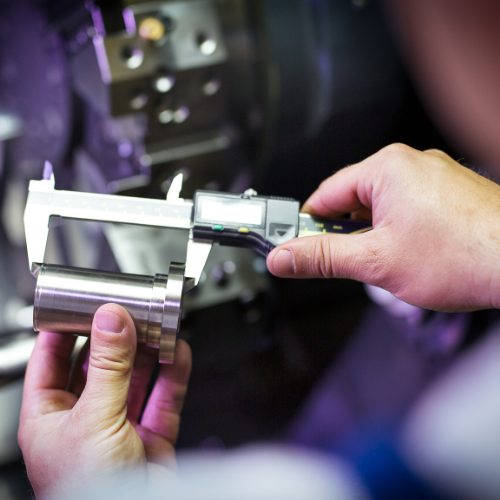How Data-Driven Manufacturing Will Impact Your Shop Floor
More and more manufacturers are benefitting from paperless manufacturing and systems such as MES – proof of the power in data-driven manufacturing.

No, it’s not software. I don’t need 26 years of experience to tell you that software is not a decision people make quickly.
First, there’s fight or flight. Those decisions don’t take a moment. Remove your hand from the hot stove. Breathe. Run. You don’t often run into life-or-death decisions at work. When or if you do, your instinct is going to take over much quicker than your written processes.
Every day, we make tons of habitual decisions. You may think of these as more automated. You’re standing in line at the grocery store and the person in front of you steps forward. You do too. It’s patterned into your way of thinking and doing. You could decide to stand where you are, but most people fall into the expected pattern to keep things smooth.
There are thoughtful and planned ones as well. I don’t need to give you examples of this one; if you’re working in manufacturing, these happen all day long. Most processes are either well-written or well-known. If the process is designed and communicated well enough, these may approach the point of being habitual and more predictable.
I want to focus on instinctual decisions. Your “gut” tells you these are the right ones. These happen often in manufacturing. Think about the old adage “hammer to fit.” That’s a gut decision. I saw something that wasn’t quite right. I have a hammer on my desk, now in my hand. What if I hit it? Could I make it right? Yes, instinctual decisions may seem like a good thing (on the one hand), where people with experience are leading the way. Yet, they can be where things go so very, very wrong.
If you have live production, with operators on the shop floor, you have gut decisions being made every day. The shop exists to get goods out the door. Whether you are picking and shipping, assembling, or producing original goods, everyone’s working towards the loading dock in some fashion. There is no reward for being slow, thoughtful, or behind. There is pressure to meet new and more rigorous demands every week.
When faced with a situation – a need for a decision – do you think this environment supports a thoughtful approach or one that is more aligned with instinct?

Businesses only do well if they perform. Every business measures the volume and type of work that they’re doing. They may compare this to prior periods or to industry statistics. It would be rare for us to talk to a company, any company, that is not tracking to a list of at least a handful of metrics. Now, not everyone on the shop floor – on your shop floor – is going to be worried about this, but your supervisors will be. Someone is measured on how that team does every day. And, whether they’re acting on the results you post or not, those numbers serve as a measure of success or failure.
It’s hard to make better decisions without data. Thomas Davenport writes in the Harvard Business Review (in 2009, but still good information today) about a decision-making framework. I’ve studied this over time and I resonate with his model. It’s simple and boils the decision-making process down to its smallest factors. The model goes as follows:
At the conclusion of his explanation, he states: “Analytics and decision automation are among the most powerful tools for improving decision-making.”
We agree.
You cannot have analytics without data and data is the primary missing component on any shop floor we look at. “Things” (orders, jobs, people, work, parts, inventory) get to the shop floor for production and disappear into a giant black hole. They will, usually, come out the other side, but that is little help when you have one of those fight or flight moments with a customer. Then, you need to know. Whatever it is your customer is asking you, you need to know the answer for it; or where to find it.

Data from manufacturing could be a simple yield count or a more complex data point like the sales value of open inventory. No matter the data point, you know you will need supporting documentation to establish the answer to anything being asked by your company, customers, or team.
If you need more data from your shop and are not sure where to start, connect with us. We’ve been doing this for more than 25 years and we’re happy to share our insight with you. Just reach out and ask us the questions that you have.
Anxious to get the information faster? Engage with us for a Process Gap Analysis of your shop. We’re only an email away, info@cimx.com.
Contact CIMx Software to see how a Manufacturing Execution System can improve production control for you.

More and more manufacturers are benefitting from paperless manufacturing and systems such as MES – proof of the power in data-driven manufacturing.

It’s not often that we quote ancient Greek playwrights, but this morning I’m thinking about Sophocles. One of the 3 greatest Greek tragedy writers...

Production data fuels the manufacturing industry. Putting this strategic information to work adds profit and production to your business.